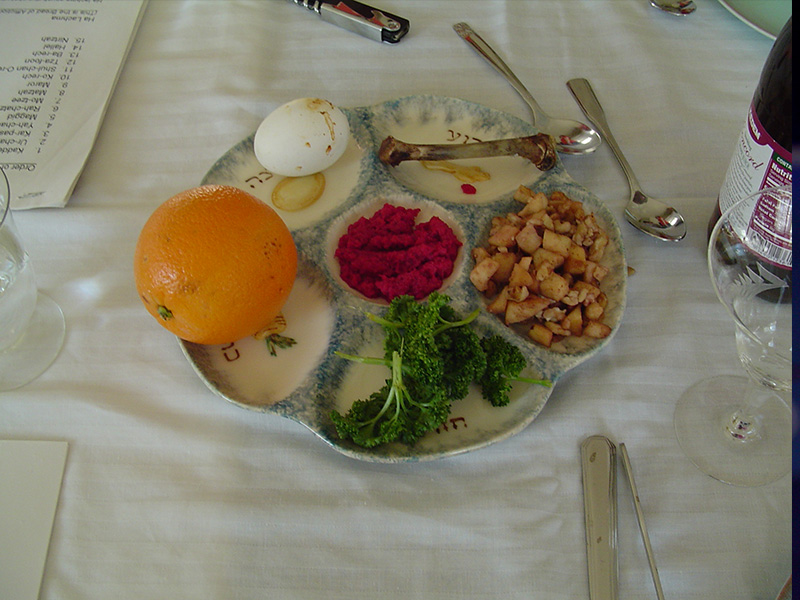Rabbi Adam Cutler
Beth Tzedec Congregation, Toronto
Rabbi Adam Scheier
Congregation Shaar Hashomayim, Montreal
Rabbi Scheier: Congregational rabbis are no strangers to preparing for the holidays. Whether it’s drafting Rosh Hashanah sermons, planning Shavuot learning, or programming for Chanukah, we try to stay ahead of the calendar. It seems to me, however, that Passover is the one holiday during which our congregants join us in this intense advance preparation.
I believe this commitment to preparing for Passover is due, in large part, to the fact that the major ritual of the holiday takes place at home rather than in the synagogue. I celebrate this phenomenon. When a meaningful religious experience takes place in the home, it can convey a measure of ownership that, I believe, is necessary for a sustained religious identity.
In teaching about Passover and its rituals, how might we promote this ownership over the rituals of the seder? Are there tips or conversation starters that might help someone personalize and deepen the Passover seder?
Rabbi Cutler: The Shulchan Aruch begins its section on Pesach by noting that we begin our preparations 30 days before the holiday. Ironically, we spend considerably more time preparing to recall the Exodus than the Israelites actually spent getting ready to leave Egypt.
In the spirit of advance preparations, my shul always runs pre-Pesach workshops, a goal of which is to give seder-goers new ideas and insights to share. Moreover, as the nominal seder leader in my own home, I don’t want to carry the responsibility of creating a new experience every year alone. That’s why a couple of weeks before the holiday, I ask my guests to prepare a brief teaching on a Pesach theme.
‘When a meaningful religious experience takes place in the home, it can convey a measure of ownership necessary for a sustained religious identity’
How do you plan for your own seder? And how do you approach children with a seder that often goes late into the night?
Rabbi Scheier: For adults, I organize an annual pre-Passover class that explores newly published Hagaddot. Typically. I present one section of the Haggadah – say, the Four Children – and explore the different ways recent publications address the topic. It always inspires me to contemplate new approaches to this ancient text. This year, we are also presenting an innovative new pre-Passover session, geared specifically to mourners in an effort to provide support to those for whom the joy of the upcoming Passover will be mitigated by the absence of a loved one.
READ: PESACH BY NUMBERS: HOW MANY CALORIES IN THE AVERAGE SEDER?
However, your question addresses the major challenge of the seder, which is a logistic one: insofar as the entire purpose of the seder is to tell the Exodus story to the children, how do we ensure that the children are included in the conversation – and not at the expense of the adults, who need their own intellectual stimulation – given the late hour and the sophisticated text and structure of the seder. (The 1 a.m. image of sundry children passed out on every available sofa, chair, or cushion comes to mind.)
The classic techniques of inviting the children to ask the Four Questions or searching for the afikoman are certainly effective, but we are always looking for more. Whether it’s purposely including older children in conversation and readings or inviting preliterate children to dramatize aspects of the seder, there are many ways to achieve this connection.
That’s why thinking ahead is so important. To run an interesting, uplifting, and engaging seder, one must invest time and effort into preparation.
Rabbi Cutler: This Passover will mark my first seder in many years with child participation, though I suspect the child in question won’t stay awake for too long.
Of course, while the seder is the primary vehicle for Exodus education, it is wholly appropriate throughout the holiday, especially for children for whom the seder is too late, to tell the story of the Exodus in whatever modality is most appropriate.
Many educators far wiser than us have tackled the challenge of making the seder engaging for all participants. A Different Night: The Family Participation Haggadah is one of the excellent unabridged Haggadot that includes activities, often involving movement and surprising objects, to help make the seder meaningful for everyone. A good plan, pre-assigned roles, and lots of props go a long way toward entertaining and educating.






